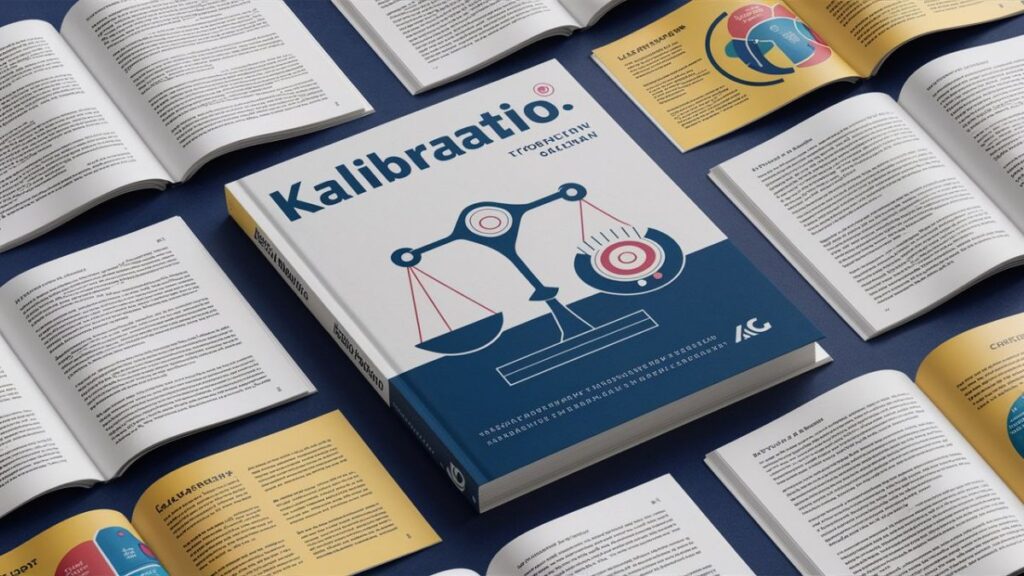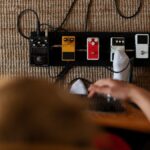1. The Word That Few Say but Everyone Depends On
Let’s start with the mouthfeel of it — kalibraatio. A Finnish word, smooth and exact, like the whir of a laser scanner or the slow tick of an atomic clock. It means “calibration” — the act of fine-tuning an instrument to make sure it reads correctly. Simple? Hardly.
Kalibraatio is the silent architect of accuracy, the invisible ritual behind every click, measure, and digital whisper that defines modern life.
Your smartwatch counting your heartbeat. The espresso machine pulling a perfect 18-second shot. The thermometer reading 36.8°C before you leave for work. All of it relies on a simple truth — without calibration, everything lies.
We rarely think about it, but kalibraatio is everywhere — from hospitals to space stations, from metaverse sensors to microchip assembly lines. It’s the invisible contract between humans and their machines.
And yet, behind that sterile word is a philosophy — an obsession, even — with balance, truth, and trust.
2. A World Built on Microns and Margins
Walk into any high-end manufacturing lab, and you’ll see people hunched over instruments that cost more than luxury cars. Their world is defined not by inches or meters, but by microns — one-thousandth of a millimeter.
A torque wrench used in an aircraft assembly line must be calibrated to apply force within fractions of a Newton meter.
A blood pressure monitor at your local clinic must be calibrated against a mercury column, ensuring that every reading is true.
In a sense, kalibraatio is the guardian of precision.
It’s not flashy. It doesn’t trend. But when things go wrong — a bridge collapses, a rocket veers off course, or a patient receives the wrong dose — calibration is often the first suspect in the investigation.
3. The Ancient Roots of Modern Accuracy
Though it sounds modern, the philosophy of calibration is ancient.
The Egyptians used a nilometer to measure the flooding of the Nile — a carved stone pillar that had to be recalibrated after every major flood.
The Greeks calibrated sundials using shadows at equinox.
In medieval Europe, weights and measures were literally guarded by the Crown — tampering with them was treason.
Accuracy has always been a currency of power.
And kalibraatio, at its core, is a quest for truth — the kind that governs trade, justice, and science alike.
4. The Modern Calibration Revolution
Today, kalibraatio has evolved into a high-tech, international system of trust.
Enter the BIPM — the Bureau International des Poids et Mesures in France, home of the global standards for units like the kilogram, meter, and second. Every nation’s measuring systems trace their accuracy back to this global reference — like branches connecting to a single trunk.
In Finland, kalibraatiolaboratoriot (calibration laboratories) are part of this chain. These are quiet, climate-controlled sanctuaries where even the air pressure and humidity are measured, stabilized, and recorded.
Every gauge, every thermometer, every voltmeter that operates in critical industries must be compared, verified, and stamped for accuracy.
Without it, chaos would spread silently — invisible errors multiplying across supply chains, science labs, and medical devices.
Kalibraatio, therefore, isn’t just a process — it’s a silent handshake of trust across global industries.
5. When the World Lost Its Kilogram
Here’s a true story:
For more than a century, the definition of a kilogram was a physical object — a platinum-iridium cylinder locked in a vault outside Paris. Every few decades, scientists would take it out and compare it to copies sent to national labs.
But here’s the twist — over time, the copies began to disagree. Some had gained micrograms; others had lost them. The physical kilogram was changing.
The world’s measure of mass was, quite literally, slipping away.
So, in 2019, the kilogram was redefined not by an object but by a universal constant — the Planck constant, measured through the most exquisite calibration ever performed by humankind.
It was a philosophical triumph — a moment when kalibraatio transcended matter itself. Humanity had calibrated the very concept of weight using the fabric of physics.
6. The Psychology of Precision
Why does calibration fascinate us so much — or at least, those who truly see its beauty?
Because it mirrors something deeply human: the desire to be aligned, measured, and true.
A musician tunes her violin — a personal act of calibration.
A chef tastes his sauce — sensory calibration.
Even our minds perform constant micro-calibrations: adjusting expectations, emotions, and beliefs to stay balanced in an unpredictable world.
Kalibraatio, in a poetic sense, is what we all do — aligning our instruments, our words, and ourselves to something real.
7. Calibration in the Digital Age: When Data Lies
Here’s the paradox of modern times: as our tools get smarter, their calibration gets trickier.
Artificial intelligence models drift. Sensors degrade. Cameras warp.
Your phone’s GPS can be off by several meters depending on weather and signal reflections.
Digital calibration — algoritminen kalibraatio — has become the new frontier.
Tech giants now employ teams of calibration engineers who ensure that everything from facial recognition to LiDAR depth mapping operates within trusted bounds.
Because if your self-driving car misjudges distance by even one centimeter, the result could be catastrophic.
Kalibraatio is no longer just about physical instruments — it’s about trusting the invisible math behind your technology.
8. When Machines Calibrate Themselves
The next frontier? Autokalibraatio — self-calibration.
Modern devices like drones, cameras, and satellites are designed to correct their own drift. Using AI and real-time feedback, they continuously recalibrate themselves without human intervention.
A Mars rover, for example, recalibrates its sensors daily based on sunlight and shadow patterns.
Quantum computers recalibrate qubit stability between operations.
Even your smartwatch uses internal algorithms to recalibrate its gyroscope every time you move.
This is the era of machines that trust themselves — but only because they’ve been taught the discipline of calibration.
9. The Human Touch in a Calibrated World
Ironically, the more we automate calibration, the more valuable human intuition becomes.
Because while machines can detect deviation, they can’t always decide why it happened.
A human calibration expert doesn’t just measure — they interpret. They sense when a reading feels “off,” even if the numbers look right.
It’s a blend of data and instinct — a craftsmanship that lies at the heart of kalibraatio.
One Finnish calibration engineer, interviewed by Tekniikka & Talous, put it perfectly:
“We don’t just adjust machines — we adjust meaning. Calibration is storytelling through numbers.”
That line stays with you.
10. The Cost of Ignoring Calibration
Every disaster has its precursors. And many, quietly, have been calibration failures.
NASA’s Mars Climate Orbiter disintegrated in 1999 because one engineering team used imperial units and another used metric — a calibration mismatch that cost $327 million.
Medical devices delivering incorrect dosages. Pipelines over-pressurized by faulty gauges. Even simple weighing scales leading to industrial losses worth millions.
When kalibraatio fails, trust collapses — and with it, entire systems.
It’s not just about numbers. It’s about faith in the unseen infrastructure of precision that modern life rests upon.
11. Finland’s Quiet Calibration Culture
Few nations take calibration as seriously as Finland.
The Finnish Measurement Standards Laboratory (MIKES) — part of VTT Technical Research Centre — is one of the most advanced in Europe.
In MIKES’ ultra-controlled labs, even vibrations from nearby traffic can throw off measurements. The air is temperature-controlled to within 0.01°C, and light levels are meticulously managed.
Here, engineers calibrate time, pressure, electricity, temperature, and even radiation.
Their work ripples across the economy — from industrial manufacturing and medical diagnostics to scientific research and trade compliance.
In Finland, kalibraatio is not just a service; it’s a national value — a commitment to doing things right, not fast.
12. Everyday Calibration: The Personal Side
We calibrate more than we realize.
When you adjust the brightness on your laptop — that’s visual calibration.
When you step on a scale and compare it to another — that’s calibration.
When you align your words to someone’s mood — that’s emotional calibration.
Kalibraatio, then, isn’t just a scientific process — it’s a life skill.
We are all walking instruments, tuning ourselves to our environments, relationships, and ambitions.
The question becomes: what are you calibrating to?
13. The Philosophy of Kalibraatio
Strip away the tools, the numbers, the sensors — and what remains is a philosophy that borders on spiritual.
To calibrate is to question.
To measure, to verify, to admit that we could be wrong.
It’s humility, precision, and curiosity rolled into one act.
Every act of calibration says: “I trust reality enough to test my assumptions.”
That’s not just scientific — that’s human.
14. The Future: Quantum Calibration and Beyond
As quantum technologies rise, calibration enters an entirely new realm.
Quantum sensors, atomic clocks, and nanotech devices require calibration at unimaginable levels of precision — where even gravity, cosmic radiation, or the Earth’s magnetic field can cause drift.
New tools like quantum interferometers are being developed to calibrate against constants of nature.
Imagine calibrating not against human-made standards but against the universe itself.
Kalibraatio will soon mean aligning human instruments to cosmic truth — literally.
15. Closing Thoughts: Living in a Calibrated World
In the end, kalibraatio is not just about numbers — it’s about alignment.
It’s about the silent moments where perfection meets humility. Where humans and machines share a language of precision.
It’s about ensuring that the world we build remains tethered to the one we live in.
Because the moment we stop calibrating — our tools, our systems, ourselves — that’s when drift begins.
And drift, left unchecked, becomes delusion.
So the next time your watch syncs to GPS time or your coffee tastes exactly right, remember: somewhere, someone (or something) has calibrated it for you.
Kalibraatio isn’t just science.
It’s the poetry of precision.





